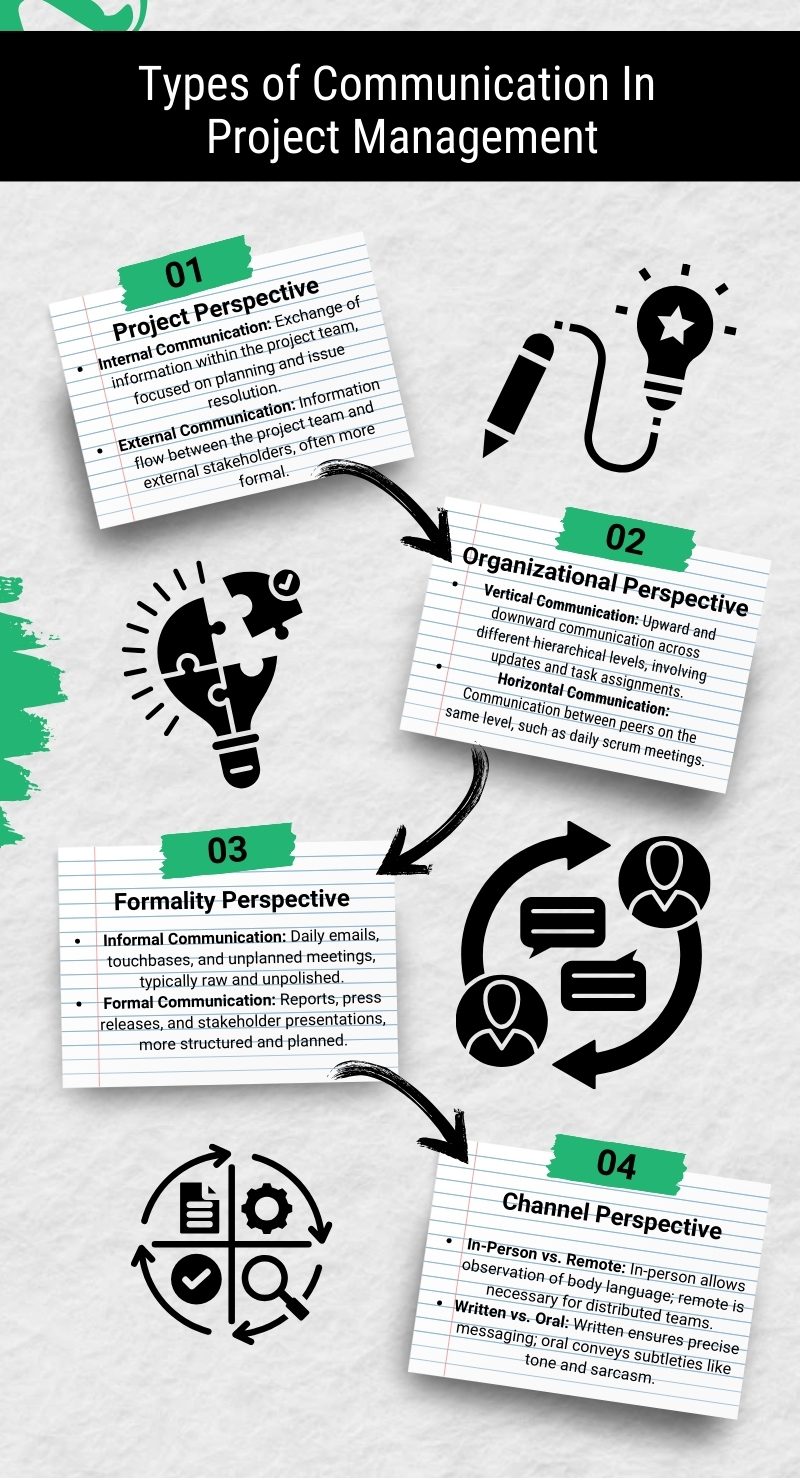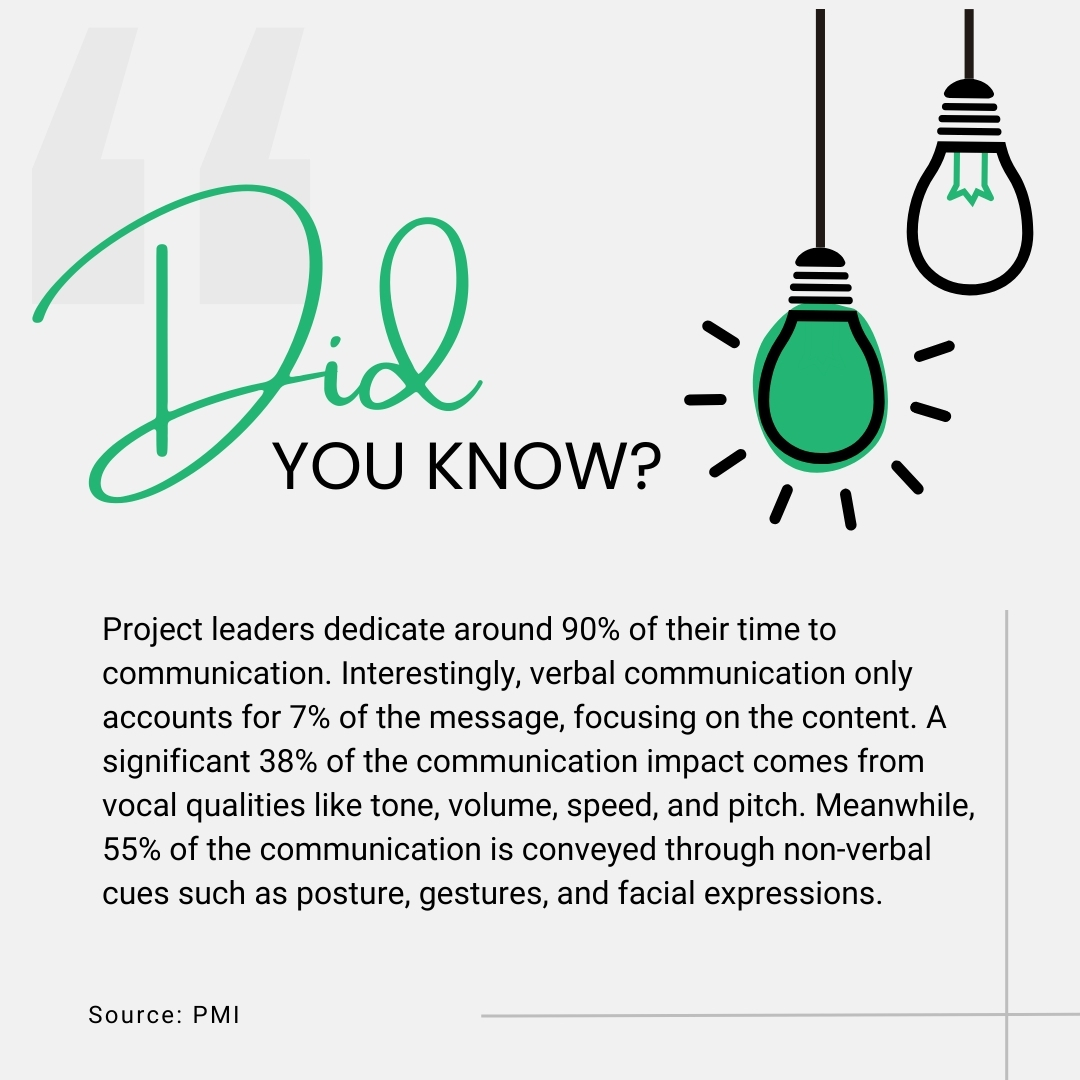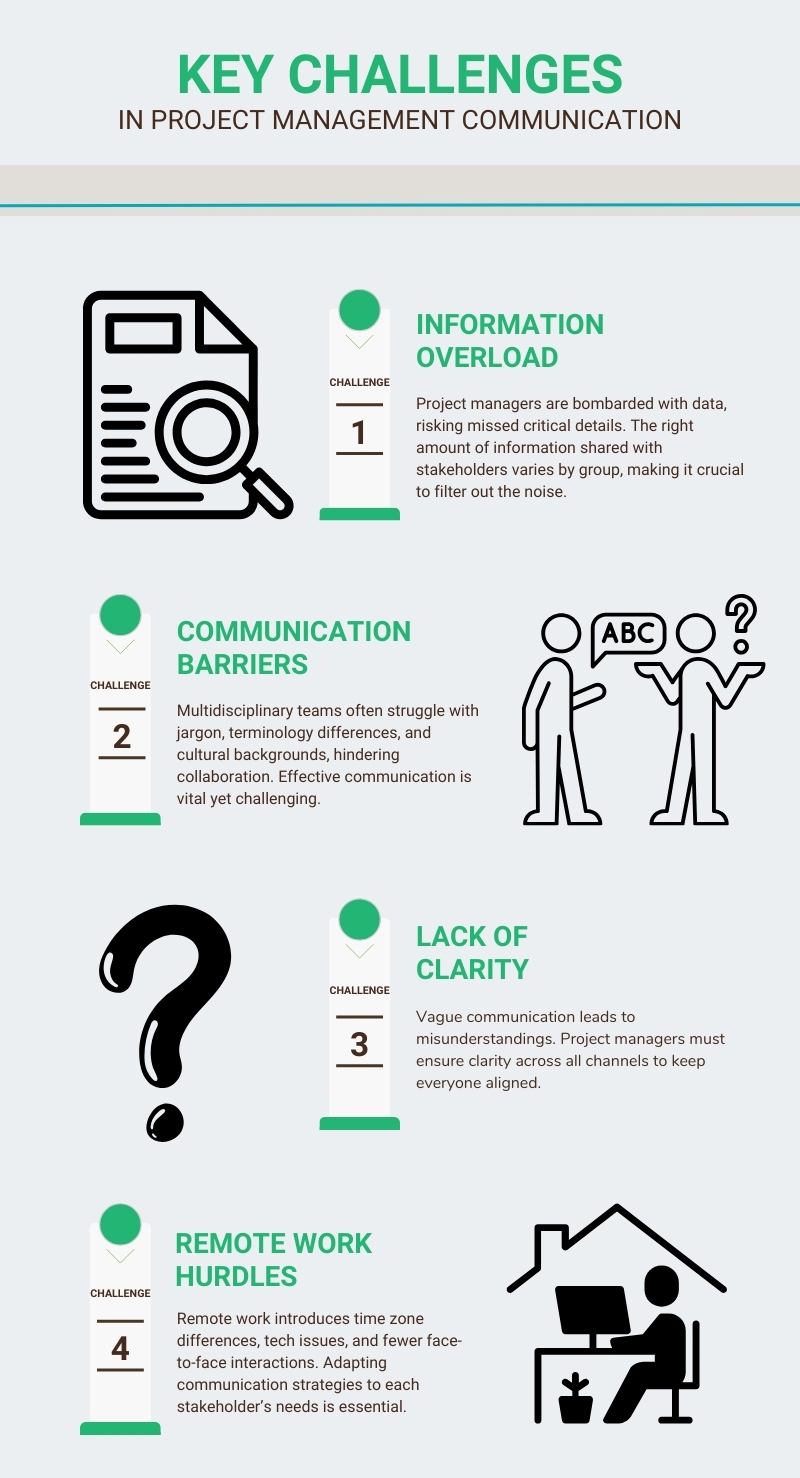
Effective communication often makes or breaks successful projects. Understanding how effective communication works in project management means knowing where to communicate and who should receive specific messages. A striking finding from a PMI report reveals that one in three projects suffers due to communication failures. Companies potentially risk $135 million for every $1 billion spent on projects, with a staggering $75 million (56 percent) of that risk attributed to ineffective communications. This underscores the critical need for organizations to tackle communication deficiencies at an enterprise level.
Many project teams rely on emails and spreadsheets for communication. When a client asks to change a deadline via email, someone must manually update the shared board or sheet. If a team member misses this update, tasks can be left incomplete.
The good news? Creating an effective communication plan isn't hard. You must define your communication channels and agree on when to use each one. Modern day technological solutions like artificial Intelligence (AI) and machine learning is a game-changer in today's project management world. AI-driven solutions like predictive analytics provides real-time insights and helps team members communicate seamlessly, no matter where they are. This leads to better collaboration, more vital teamwork, and faster project progress.
This article will guide you through establishing a robust communication plan. Knowing how effective communication works is essential for optimizing project outcomes and minimizing risks associated with communication failures.
Understanding How Effective Communication Works
In project management, a communication plan outlines how crucial project information will be conveyed to key stakeholders. This plan ensures that your team knows who should receive specific notifications and when to involve stakeholders. By clarifying the appropriate channels for communication, the frequency of updates, and the responsibilities for each channel, your team can maintain smooth and effective communication.
Without such a plan, team members might use tools inconsistently, leading to frustration, confusion, and communication breakdowns. For example, one team member might ask work-related questions in a tool that another rarely checks, causing delays and frustration. Questions might be misdirected to the wrong people without clear roles, exacerbating the issue. Ultimately, miscommunication can derail progress and cause unnecessary frustration.
What Should Your Effective Communication Plan Include?
A communication plan is your comprehensive guide for project communication. It should help your team answer critical questions such as:
- What communication channels are we using? What is each channel's purpose? How can we incorporate automation to streamline these channels?
- When should we communicate in person versus asynchronously, and how can automation support asynchronous communication?
- What are the project roles? Who is the project manager? Who are the team members and stakeholders?
- How will essential project details, like status updates, be communicated? How frequently will these updates be shared?
Addressing these questions will help your team understand how effective communication works and stay aligned throughout the project.
How Effective Communication Works: The Multifaceted Nature
Communication in project management covers various interactions, including verbal, written, and non-verbal forms. It involves sharing ideas, providing progress updates, addressing challenges, and seeking feedback from team members, stakeholders, and clients. Understanding how effective communication works is crucial to ensuring everyone is aligned, enabling smooth coordination and preventing misunderstandings that could lead to project delays or failures.

Stakeholder Engagement
As a project manager, you must identify key stakeholders, understand their needs and expectations, and create a communication plan tailored to each group. Regular updates, meetings, and reports keep stakeholders informed and engaged. Transparent communication builds trust and keeps stakeholders invested in the project's progress.
Team Collaboration
A project is only as strong as its team. Understanding how effective communication works among team members fosters improved teamwork, idea-sharing, and problem-solving. Establish communication norms, tools, and platforms to facilitate seamless interactions.
 Clear Objectives and Goals
Clear Objectives and Goals
Transparent communication of project objectives and goals ensures everyone understands the project's purpose and scope. This clarity reduces the chances of scope creep and keeps the team focused on the intended outcomes. Effective communication helps stakeholder management by linking objectives, goals, and the project's purpose.
Timely Reporting
Timely updates allow you to identify potential issues early and take corrective actions, preventing minor problems from escalating into major setbacks. Regular feedback is crucial in spotting potential problems early and addressing them promptly.
Risk Management and Issue Resolution
Understanding how effective communication works is critical to promptly identifying and addressing risks and issues. Advanced technology is crucial in proactive issue management, especially for project professionals. Using algorithms, these solutions identify potential problems early, preventing them from escalating. This foresight helps leaders implement pre-emptive measures, minimizing project disruptions and reputational damage. A culture of open communication empowers teams to identify and mitigate risks effectively, reducing the chances of unexpected disruptions.
Change Management
Projects often face changes in requirements, scope, or resources. Open communication about these changes helps manage expectations and allows for necessary adjustments without derailing the project. Grasping how effective communication works in change management ensures the team remains adaptable and focused despite project direction shifts.
By thoroughly comprehending how effective communication works in these areas, you can ensure smoother project execution, better stakeholder engagement, and a more cohesive and responsive team.
How to Write a Communication Plan
Creating a communication plan is straightforward and incredibly effective. Here's a step-by-step guide to get you started.
 1. Establish Your Communication Methods
1. Establish Your Communication Methods
First, determine where and how your team will communicate. This includes deciding when to use specific tools and when to communicate live versus asynchronously. Live communication happens in real time, while asynchronous communication allows sending messages without expecting immediate replies. For example, every email you send is a form of asynchronous communication.
Identify the purpose of each tool in your communication plan. For instance:
- Email for communicating with external stakeholders.
- Slack for real-time updates, quick questions, and assessments.
- Predictive project management solutions for asynchronous communication about tasks, project status updates, or critical documents.
- Zoom, Microsoft Teams, or Google Meet for team meetings, such as project brainstorms or post-mortems.
Understanding how effective communication works across these tools is essential to ensure clarity and efficiency.
2. Align on Communication Cadence
Next, decide how often you’ll communicate. Your communication cadence outlines how frequently you update stakeholders about various project details.
For example, you might schedule:
- Weekly project status updates for all stakeholders and sponsors.
- Monthly project team meetings to resolve any issues or brainstorm next steps.
- Asynchronous project milestone updates as needed.
A clear cadence helps everyone know when to expect updates and how effectively communication keeps everyone informed.
 3. Add a Plan for Stakeholder Management
3. Add a Plan for Stakeholder Management
Successful projects often rely on strong stakeholder support and buy-in. Initially, you achieve this during the project kickoff meeting, but maintaining this support throughout the project is crucial.
Detailed instructions on when and how to communicate with each project stakeholder. Key team members might need daily updates, while other stakeholders only require updates during project status meetings or at the final review.
By outlining how to manage stakeholder communication, you ensure they receive the correct information at the right time, focusing on business results and overall impact. This is critical to understanding how adequate communication works in project management.
4. Share and Update Your Communication Plan
Once your communication plan is ready, share it with your project team. Ensure it’s accessible in your central source of truth for all project information. A predictive project management solution can help track all project communication and work, allowing you to discuss tasks where you work.
If any changes affect your communication plan, update it and inform your team. Keeping everyone in the loop with current information ensures they understand how effective communication works within the project.
Following these steps, you can create a robust communication plan that ensures clarity, efficiency, and stakeholder engagement throughout your project.
How Effective Communication Works with Advanced Solutions
Modern technologies, like AI-powered predictive project management solutions, have revolutionized the project execution process by automating the generation of reports and documentation. Leveraging machine learning algorithms, these solutions can efficiently process vast amounts of data, extract crucial information, and compile comprehensive reports with exceptional speed and accuracy. This automation saves valuable time and ensures stakeholders receive timely and consistent information, aiding informed decision-making.
AI tools analyze extensive datasets, pinpoint relevant data, and produce detailed reports with unmatched precision. This accelerates the reporting process and guarantees consistency and accuracy in sharing project information with stakeholders.
Integrating modern technological solutions like predictive analytics into project management processes like reporting and documentation significantly enhances your ability to deliver timely and insightful reports. They can provide timely, insightful reports because machine learning algorithms recognize patterns and extract relevant data from various sources. This means the reports offer a complete view of the project’s progress, allowing you to focus on strategic decision-making and addressing critical project aspects by minimizing the manual effort involved in report generation. Furthermore, predictive analytics will enable professionals to foresee potential challenges by analyzing historical data and spotting trends. This insight allows teams to proactively adjust their communication strategies, ensuring they are prepared to respond effectively to crises.
Beyond efficiency, advanced solutions like predictive analytics improve data visualization, transforming complex datasets into easily understandable formats. Doesn’t it make your work more streamlined? Well, it does.
What’s Next?
Mastering how effective communication works within project management is non-negotiable for any organization's success. With one in three projects failing due to communication breakdowns and companies risking millions, it's clear that handling these challenges is crucial. By establishing a robust communication plan that defines channels, aligns on cadence, and integrates advanced AI solutions, teams can enhance collaboration, stakeholder engagement, and timely reporting. This strategic approach minimizes risks, fosters a cohesive work environment, and ensures smooth project execution.
If you are looking for a predictive project management solution that helps you make data-driven decisions, mitigate risks, and maintain a strategic approach to effective communication, look no further than TrueProject. TrueProject is a KPI-based predictive project management SaaS solution that improves project health and performance and provides a centralized platform for real-time insights, stakeholder feedback, and data integration. By offering advanced predictive intelligence, TrueProject identifies potential issues before they become critical, ensuring timely updates and clear communication channels. This solution supports various communication needs through customizable dashboards, automated assessments, and comprehensive reports, facilitating seamless collaboration among team members and stakeholders. This comprehensive approach minimizes risks, optimizes project outcomes, and ensures all stakeholders are informed and engaged throughout the project lifecycle.
By embracing communication's multifaceted nature and leveraging AI's capabilities, your organization can transform potential failures into seamless, efficient, and successful project outcomes.
 About the Author:
About the Author:
Nivedita Gopalakrishna is a content marketing specialist within the TrueProject Marketing team with extensive experience in blog writing and website content creation across diverse industries. Nivedita’s proficiency in crafting engaging blog posts and informative website content is a testament to her years of experience. Beyond her prowess in written communication, Nivedita has a knack for creating visually appealing static graphics that have played a pivotal role in expanding TrueProject 's marketing efforts. Through thoughtful design choices, she has helped convey the brand's essence and captivate audiences effectively. Outside the professional sphere, Nivedita is a trained classical singer and a fitness enthusiast, embodying creativity and wellness in and out of the office.
Endnotes:
- Minois, Nadege. “The Importance of Communication in Project Management.” Institute Project Management. October 20, 2023. https://instituteprojectmanagement.com/blog/the-crucial-role-of-communication-in-project-management/#:~:text=It%20involves%20conveying%20ideas%2C%20sharing,to%20project%20delays%20or%20failures
- Rajkumar, Sivasankari. “Art of communication in project management.” Project Management Institute (PMI).14 July 2010. https://communicationmgmt.usc.edu/blog/communication-in-project-management
- “The Importance of Communication in Project Management.” Kissflow. (n.d). https://kissflow.com/project/communication-in-project-management/
- “The Importance of Communication in Project Management.” Indeed. December 06, 2022. https://www.indeed.com/career-advice/career-development/importance-of-communication-in-project-management
- Martins, Julia. “Why a clear communication plan is more important than you think.” Asana. January 14, 2024. https://asana.com/resources/communication-plan?utm_campaign=&utm_source=&utm_medium=&gad_source=1&gclid=Cj0KCQjws560BhCuARIsAHMqE0FJCz7uiwHwGI4YXHB-HpZyOnO2w0UAYy8llkDa6gUmnfVpiaHtqeUaAhKTEALw_wcB&gclsrc=aw.ds
- Joubert, Shayna. “The Critical Role of Communication in Project Management.” Northeastern University's Graduate Programs. March 31, 2020. https://graduate.northeastern.edu/resources/communication-in-project-management/





